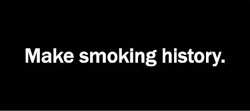90% of smokers started before the age of 18.
Research shows that kids who shop at stores with tobacco two or more times a week are 64% more likely to start smoking than their peers who don’t. [1] While cigarette use among young people in Massachusetts is falling, the tobacco industry has redoubled its efforts and is heavily targeting to youth, resulting in a sharp increase in youth use of other tobacco products and e-cigarettes.
The industry targets young people because their bodies and brains are more susceptible to nicotine addiction.
The tobacco industry uses three main tactics in its efforts to hook kids on tobacco products. The tobacco industry uses flavoring to attract young people by disguising the taste of tobacco. The Industry prices these products cheaply to encourage impulse buys by adolescents. The tobacco industry then places these cheap, flavored tobacco products in places young people frequently go, including corner stores, mini-marts, gas stations, and pharmacies.
But you can fight the industry’s efforts to make its products sweet, cheap, and easy for young people to get. Here’s how:
- Support local strategies, such as those that strengthen regulations to prevent youth access to tobacco. Find out more on local strategies. You can also connect with Tobacco Free Mass, which has additional information on efforts to combat the tobacco industry’s influence on a statewide basis.
- Look around and talk to your kids. What’s the tobacco industry up to in your community? Talk with kids in your community about tobacco and ask them what they see. The more our kids are exposed to these products, the more likely they are to start smoking and use other tobacco products.
- Spread the word. Many people think the tobacco problem is solved. It’s not. The youth cigarette smoking rate continues to decrease in Massachusetts, but 4,700 young people still become cigarette smokers every year in our state. And young people’s use of other tobacco products has increased.[2] In 2009, for the first time, high school students used tobacco products other than cigarettes at a higher rate than cigarettes.[3] Contact your local Tobacco-Free Community Partnership to learn more about this issue and engage with other community members.
- Engage young people. Encourage young people to join The 84 Movement, MTCP’s youth initiative that empowers young people to make changes in their own communities. They help spread the message that the majority of Massachusetts high school students do not smoke and educate local stakeholders about policy change options. Over 1,200 youth are currently registered with chapters of The 84.
Big Tobacco Targets Kids Campaign
In 2014, the Massachusetts Department of Public Health launched a campaign – Big Tobacco Targets Kids* – to spread awareness to parents and residents of Massachusetts that Big Tobacco is targeting their kids with products that are sweet, cheap, and easy to get. Check out our campaign resources to learn more.
Campaign Resources:
- Download the Big Tobacco Targets Kids Poster (PDF)
- Download an overview about Tobacco Industry Tactics (PDF)
- RetailMarketing_OtherFacts
- RetailMarketing_FAQ
*This campaign was originally adapted from “This is Tobacco Marketing” developed by the Community Partnerships for a Tobacco Free New York, funded by the NYS Bureau of Tobacco Control.
[1] Henriksen, Schleicher, Feiughery and Fortmann. Pediatrics: The Official Journal of the American Academy of Pediatrics. July 19, 2010, DOI: 10.1542/peds.2009 3021
[2] New underage daily smoker estimate based on data from U.S. Dept of Health and Human Services (HHS), “Results from the 2012 National Survey on Drug Use and Health,” with the state share of national initiation number based on CDC data on future youth smokers in each state compared to national total. Information accessed June, 2014 from: http://www.tobaccofreekids.org/facts_issues/toll_us/massachusetts
[3] http://www.mass.gov/eohhs/docs/dph/tobacco-control/adolescent-tobacco-use-youth-trends-1993-2009.pdf





